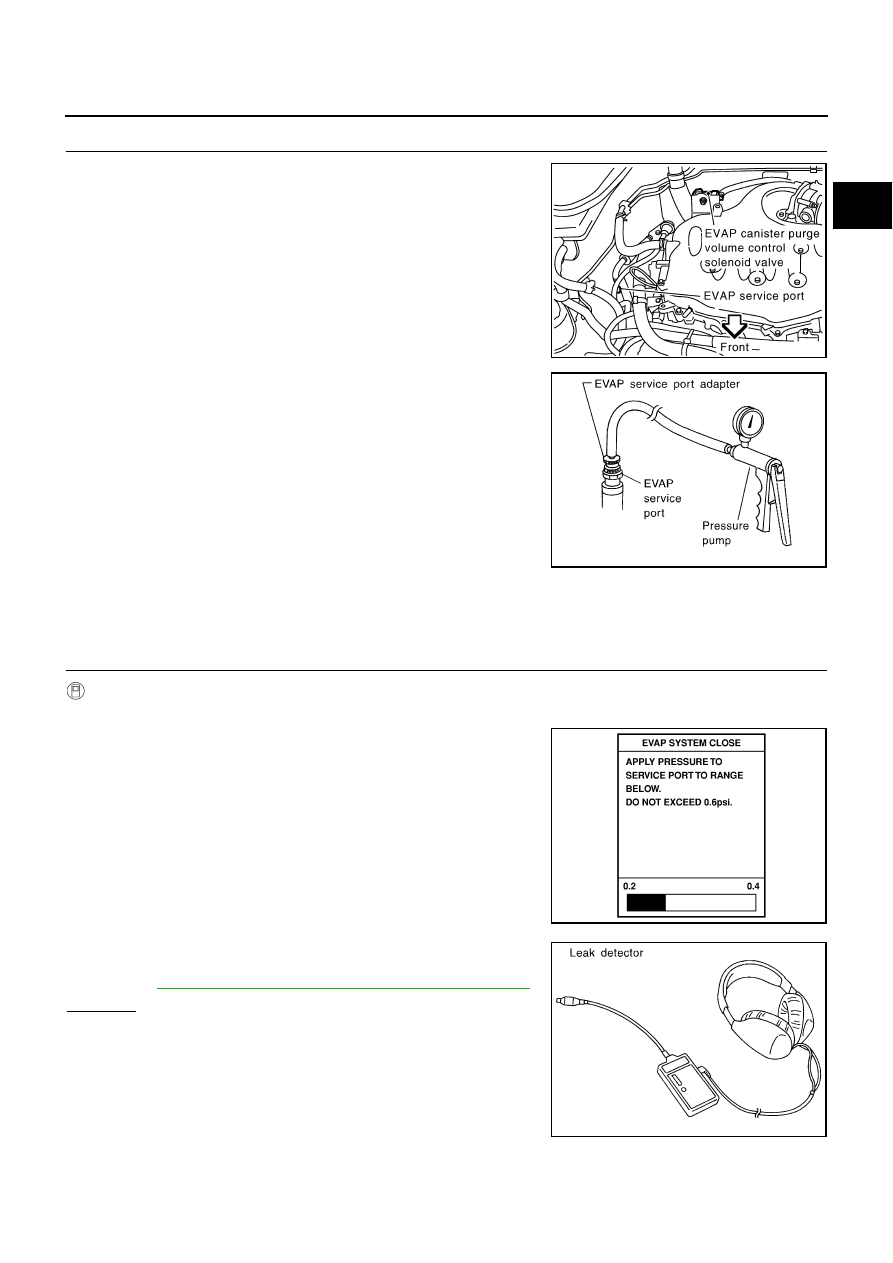Infiniti M35/M45 Y50. Manual - part 494

DTC P0455 EVAP CONTROL SYSTEM
EC-449
[VQ35DE]
C
D
E
F
G
H
I
J
K
L
M
A
EC
8.
INSTALL THE PRESSURE PUMP
To locate the EVAP leak, install EVAP service port adapter and pres-
sure pump to EVAP service port securely.
NOTE:
Improper installation of the EVAP service port adapter to the
EVAP service port may cause leaking.
With CONSULT-II>>GO TO 9.
Without CONSULT-II>>GO TO 10.
9.
CHECK FOR EVAP LEAK
With CONSULT-II
1.
Turn ignition switch ON.
2.
Select “EVAP SYSTEM CLOSE” of “WORK SUPPORT” mode
with CONSULT-II.
3.
Touch “START” and apply pressure into the EVAP line until the
pressure indicator reaches the middle of the bar graph.
CAUTION:
●
Do not use compressed air or a high pressure pump.
●
Do not exceed 4.12 kPa (0.042 kg/cm
2
, 0.6 psi) of pres-
sure in the system.
4.
Using EVAP leak detector, locate the EVAP leak. For the leak
detector, refer to the instruction manual for more details.
Refer to
EC-40, "EVAPORATIVE EMISSION LINE DRAWING"
OK or NG
OK
>> GO TO 11.
NG
>> Repair or replace.
PBIB2006E
SEF916U
PEF917U
SEF200U